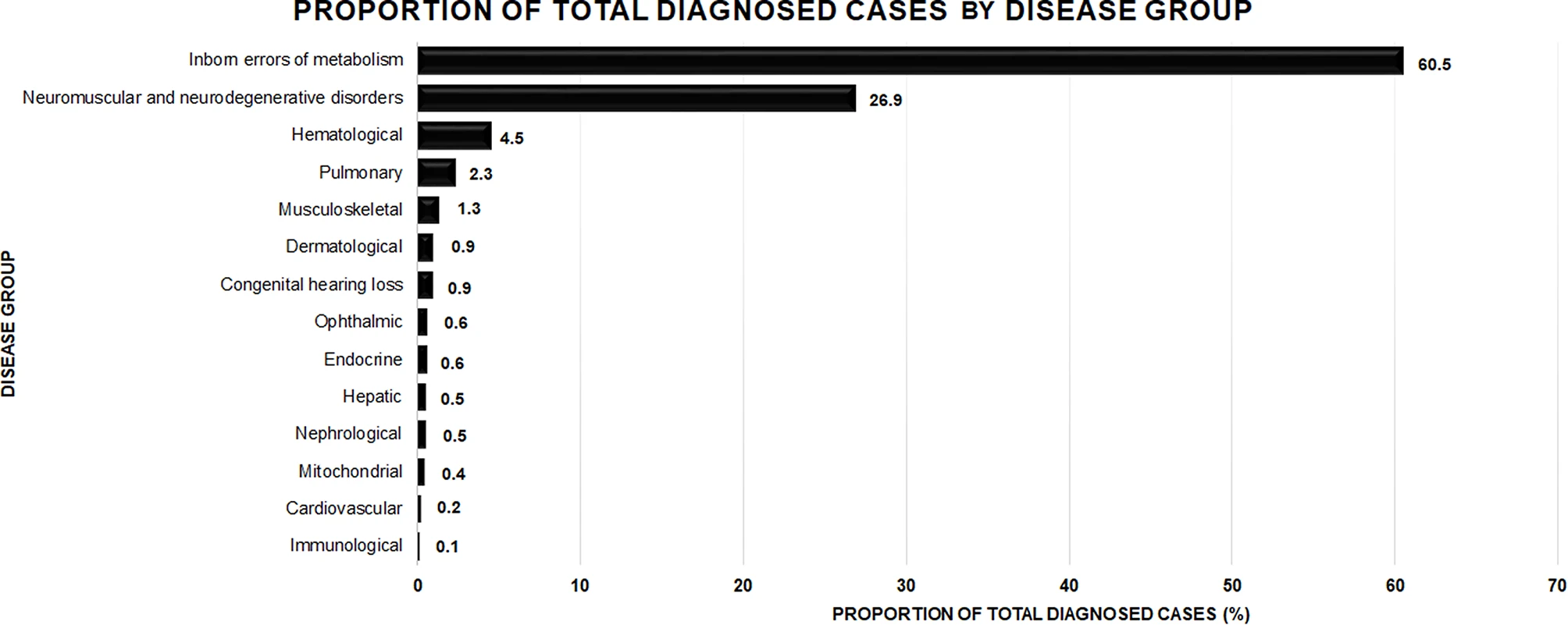FRIGE scientists analyse burden of rare genetic disorders in India
Systematic analysis of data of over 3000 patients from tertiary centre during 22 year period shows 3000 patients with rare genetic diseases across 14 major disease groups.

The study published in the *Orphanet Journal of Rare Diseases*provides India’s first systematic assessment of the distribution of rare genetic disorders.
The study involved assessment of data from over 3000 patients which were referred for a genetic test during a 22 year period from 2000 to 2022.
The study led by Dr. Jayesh Sheth, Dr. Frenny Sheth and Dr. Harsh Sheth, identified 305 rare diseases in this patient cohort. By stratifiying these diseases into 14 disease groups, the highest number of rare diseases belonged to the neuromuscular and neurodevelopmental group, followed by inborn errors of metabolism.
We further show that Duchenne muscular dystrophy, triplet repeat expansion disorders and spinal muscular atrophy were the most common amongst the neuromuscular and neurodevelopmental group.

Image showing distribution of rare genetic disorders by disease group. Images taken from Sheth et al. 2024.
In turn, β-thalassemia and cystic fibrosis were the most common amongst the haematological and pulmonary groups, respectively.
Recurrent variants for Gaucher disease (GBA:c.1448T > C), β-thalassemia (HBB:c.92.+5G > C), non-syndromic hearing loss (GJB2:c.71G > A), albinism (TYR:c.832 C > T), congenital adrenal hyperplasia (CYP21A2:c.29–13 C > G) and progressive pseudo rheumatoid dysplasia (CCN6:c.298T > A) were observed in the present study, and gave an insight into diagnostic strategies which could be used when a patient is presented with these diseases.
The study also showed the impact of introducing next generation sequencing (NGS), such as clinical and whole exome sequencing, on diagnosis of rare disorders. Particularly, since the introduction of NGS in 2015, there was significant increase in the number of patients diagnosed under the disease groups such as congenital hearing loss, dermatological, hepatic and nephrological disorders. Indeed, these technologies provided an average diagnostic yield of 40.8!
The biggest impact of NGS was observed in the diagnosis of rare neurological and neurodevelopmental disorders where single letter changes in the DNA are commonly observed across 100s of genes, and were likely missed by conventional approaches.
Is this important for India?
In view of the upcoming treatment modalities for several rare diseases, it is necessary to have molecular epidemiological data of these diseases. This first systematic study would help the government prioritise drug development and deployment strategies at a national level.
Prevention by prenatal screening in families with a history of rare genetic diseases has gained importance and molecular epidemiology data helps in providing targeted interventions in certain communities or regions where these diseases are present in high numbers.
Collaboration among the clinical, research and diagnostic communities is needed to address the challenges of diagnosis, management, treatment and prevention of rare diseases in the country.
Who can you contact about rare diseases?
If you have been diagnosed with a genetic disorder or have a suspicion of a genetic disease, you can contact us to know more.
Who funded the study?
The study was funded by the Indian Council of Medical Research, Department of Biotechnology (India), Gujarat State Biotechnology Mission and FRIGE-Bakeri Rare Disease Fund.